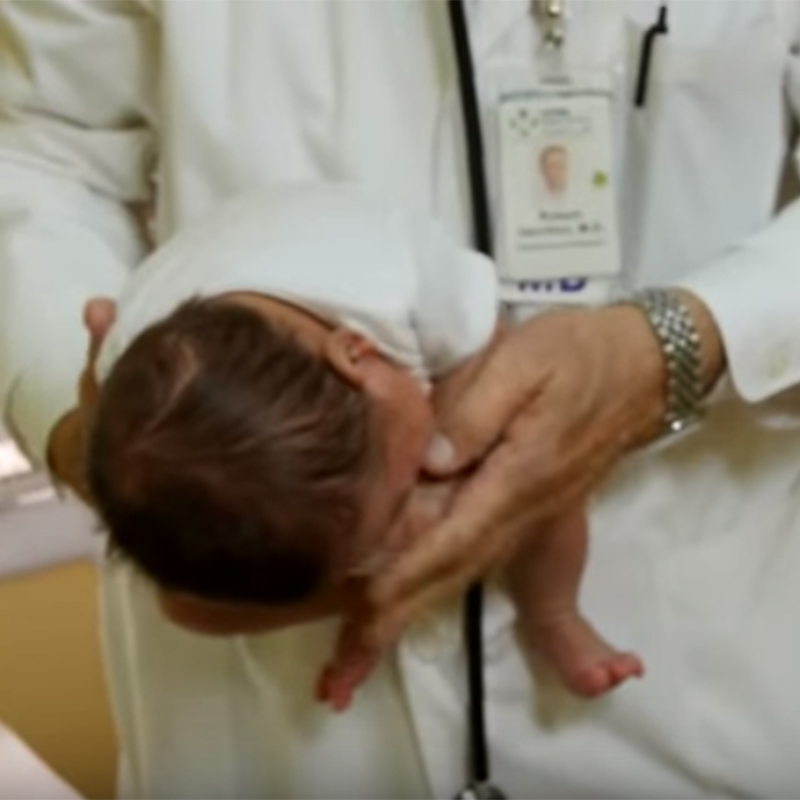- Study Says Most Parents Don’t Use Car Seats In Ride Share Vehicles Like Uber
- This 12-Year-Old Boy Is A Sophomore Aerospace Engineering Major!
- Fire Safety Experts Warn Of Hand Sanitizer Danger After A Mom and Kids Escape House Fire
- Recall Alert: Peaches May Be The Cause Of Salmonella Outbreak, 68 People Ill
- Summer Vacation In The Days Of COVID: Tips To Stay Safe
- How To Safely Grocery Shop During The Coronavirus Pandemic
- Michigan Teen With Vape-Related Illness Undergoes Double Lung Transplant
- Teen Kicks Off Anti-Vaping Campaign From Hospital Bed
- Teenager Receives Life Sentence For Strangling Sister To Death Over A Wi-Fi Password
- Toddler Falls To Death From 11th Deck of Cruise Ship
Alarming Number Of Babies Are Born Addicted To Opioids


The epidemic of opioid abuse has resulted in a lot of casualties.
And the sad reality is that there is a growing number of newborn babies to the list.
A recent National Drug Surveys on Drug Use and Health Study says that an annual average of roughly 21,000 pregnant women aged 15 to 44 misused opioids in the past month.
Federal health officials say that there’s been a corresponding increase in the number of newborns born who suffer from opioid withdrawal.
The condition is known as neonatal abstinence syndrome.
It is a group of problems which newborn babies experience after being exposed to opioids in the womb.
Symptoms may include fever, vomiting and seizures and they can emerge as early as 24 hours after birth.
UC San Diego pediatrician Michelle Leff said that affected babies are born addicted to opioids.
“And if their symptoms are severe enough, we give them lower doses of opioids and slowly decrease that over time, to help with the symptom management, and wean them off, slowly,” she said.
The long-term effects of neonatal abstinence syndrome are still unknown.
In 2015, there were 3,360 babies born with this condition in California.
Obesity In Children And Teens At All Time High

With the abundance of fast food chain restaurants in every country, and the easy access to a quick, cheap meal, it comes as no shock that the number of obese children and adolescents is at an all-time high compared to a couple of decades ago.
Ten times as high to be exact!
The United States of America, some Caribbean countries like Puerto Rico, as well as Middle Eastern countries such as Kuwait and Qatar, came up next in line with obesity levels that are over 20% for the same age group as the Pacific Islands.Majid Ezzati, who led the research and is a professor of global environmental health the Imperial College London in the United Kingdom stated that over the past 4 decades, the rates of obesity in children as well as adolescents have risen dramatically and are continuing to do so in low and middle-income countries. In high-income countries, obesity has plateaued and evened out but is still at an unacceptably high rate. Majid Ezzati also stated that children nowadays start gaining weight at around the age of 5, unlike children of two generation past.
James Bentham, who is a statistician at the University of Kent and co-authored the paper, stated that obesity rates in children and adolescents are accelerating around South, East and Southeast Asia, and are still rising in other low and middle-income countries.
While the average body mass index among adolescents and children has recently evened out in North America and Europe, it is still dangerous to be complacent as over one in five young individuals in the US is obese, and one in ten in the UK is obese. Obesity as a child carries over a likelihood of obesity as an adult, and this comes with many consequences and risks, including a higher risk of diabetes, some carcinomas (cancer) and cardiovascular diseases, with type 2 diabetes being a typically onset condition in adults.











0 comments